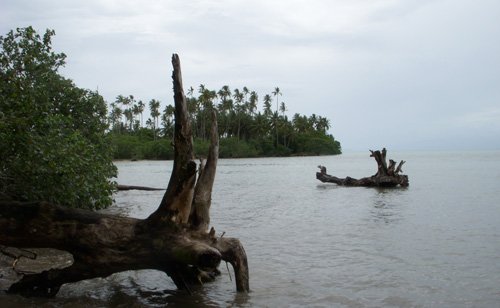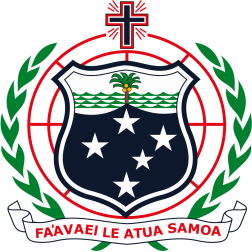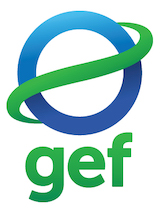Samoa's Second National Communication - 2009
Project Overview
The creation of a National Communication offers countries the opportunity to contribute with technically sound studies and information that can be used for designing mitigation and adaptation measures, and project proposals that can and will help increase their resilience to the impacts of climate change. Activities generally include: V&A assessments, Greenhouse Gas Inventory preparation, Mitigation Analysis or Education, and awareness raising activities. The ultimate goal is the integration of climate change considerations into relevant social, economic and environmental policies and actions.
Approximately 70% of Samoa’s population and infrastructure are located in low-lying coastal areas. Projected sea level rise could exacerbate coastal erosion, loss of land and property and dislocation of the island inhabitants. The extreme events of tropical cyclones Ofa (1990) and Val (1991) caused damage with costs estimates of approximately four times the gross domestic product (GDP) of Samoa.
Project Details
Samoa, a small island country in the South West Pacific, was the first in the region to become independent in 1962. The country is a group of two main islands, Savai’i and Upolu, as well as several smaller islands lying in the Polynesia region of the southern Pacific Ocean. The country consists of four main inhabited islands and six uninhabited islands. Its total area is approximately 2,931 square kilometers, with a coastline of about 403 kilometers. According to CIA's latest report, approximately 193,000 people live in Samoa, with an economy base on subsistence and exports that include agriculture, fishery and forestry products. Tourism is another growing industry. There are also several food processing and automobile parts plants. However, the country remains somewhat dependent on financial aid
References
- Dohan, Rosemary; Hove, Hilary; Echeverría, Daniella; Hammill, Anne, Parry, Jo-Ellen. (2011) “Review of Current and Planned Adaptation Action: The Pacific.” Adaptation Partnership/International Institute for Sustainable Development, pp.115-128.
- Central Intelligence Agency [CIA] (2011). Samoa. The World Factbook. Retrieved from https://www.cia.gov/library/publications/theworld-factbook/geos/ws.html
- Ministry of Natural Resources, Environment and Metorology [MNREM] (2005). National Adaptation Programme of Action Samoa. Retrieved from http://unfccc.int/resource/docs/napa/sam01.pdf
- National Climate Change Country Team [NCCCT] (1999). Samoa. First National Communication to the UNFCCC. Retrieved from http://unfccc.int/resource/docs/natc/samnc1.pdf
- Netherlands Ministry of Foreign Affairs [NMFA], Swiss Agency for Development and Cooperation, United Kingdom Department for International Development and the World Bank (2010). Economics of Adaptation to Climate Change: Samoa. Washington: The World Bank Group. Retrieved from http://climatechange.worldbank.org/sites/default/files/documents/EACC_Samoa.pdf
Key Results and Outputs
- Sustainable development and the integration of climate change concerns into medium- and long-term planning
- Inventories of anthropogenic emissions by sources and removals by sinks of greenhouse gases
- Measures contributing to addressing climate change
- Research and systematic observation
- Climate change impacts, adaptation measures and response strategies
- Education, training and public awareness
Potential Adaptation Measures
Agriculture and Food Security:
- Educational & outreach activities to change management practices to those suited to climate change
- Switch to different cultivars Water Resources
Water Resources:
- Increase water supply, e.g. by using groundwater, building reservoirs, improving or stabilizing watershed management, desalination
- Decrease water demands, e.g. by increasing efficiency, reducing water losses, water recycling, changing irrigation practices
- Develop and introduce flood and drought monitoring and control system
Coastal Zones and Marine Ecosystems:
- Develop Integrated Coastal Zone Management
- Develop planning/new investment requirements
- Protect, including building sea walls, and beach nourishment
Reports and Publications
Assessments and Background Documents
Samoa's Second National Communication - Official Document - 2009
Monitoring and Evaluation
In 1992, countries joined an international treaty, the United Nations Framework Convention on Climate Change, to cooperatively consider what they could do to limit average global temperature increases and the resulting climate change, and to cope with whatever impacts were, by then, inevitable.
Parties to the Convention must submit national reports on implementation of the Convention to the Conference of the Parties (COP). The required contents of national communications and the timetable for their submission are different for Annex I and non-Annex I Parties. This is in accordance with the principle of "common but differentiated responsibilities" enshrined in the Convention.
The core elements of the national communications for both Annex I and non-Annex I Parties are information on emissions and removals of greenhouse gases (GHGs) and details of the activities a Party has undertaken to implement the Convention. National communications usually contain information on national circumstances, vulnerability assessment, financial resources and transfer of technology, and education, training and public awareness.
Since 1994, governments have invested significant time and resources in the preparation, collection and validation of data on GHG emissions, and the COP has made determined efforts to improve the quality and consistency of the data, which are ensured by established guidelines for reporting. Non-Annex I Parties receive financial and technical assistance in preparing their national communications, facilitated by the UNFCCC secretariat.



